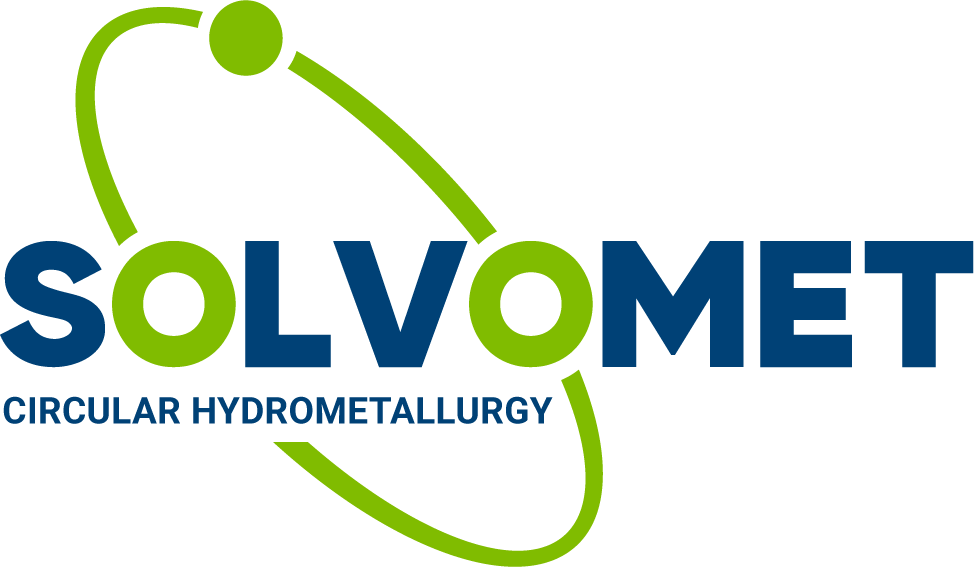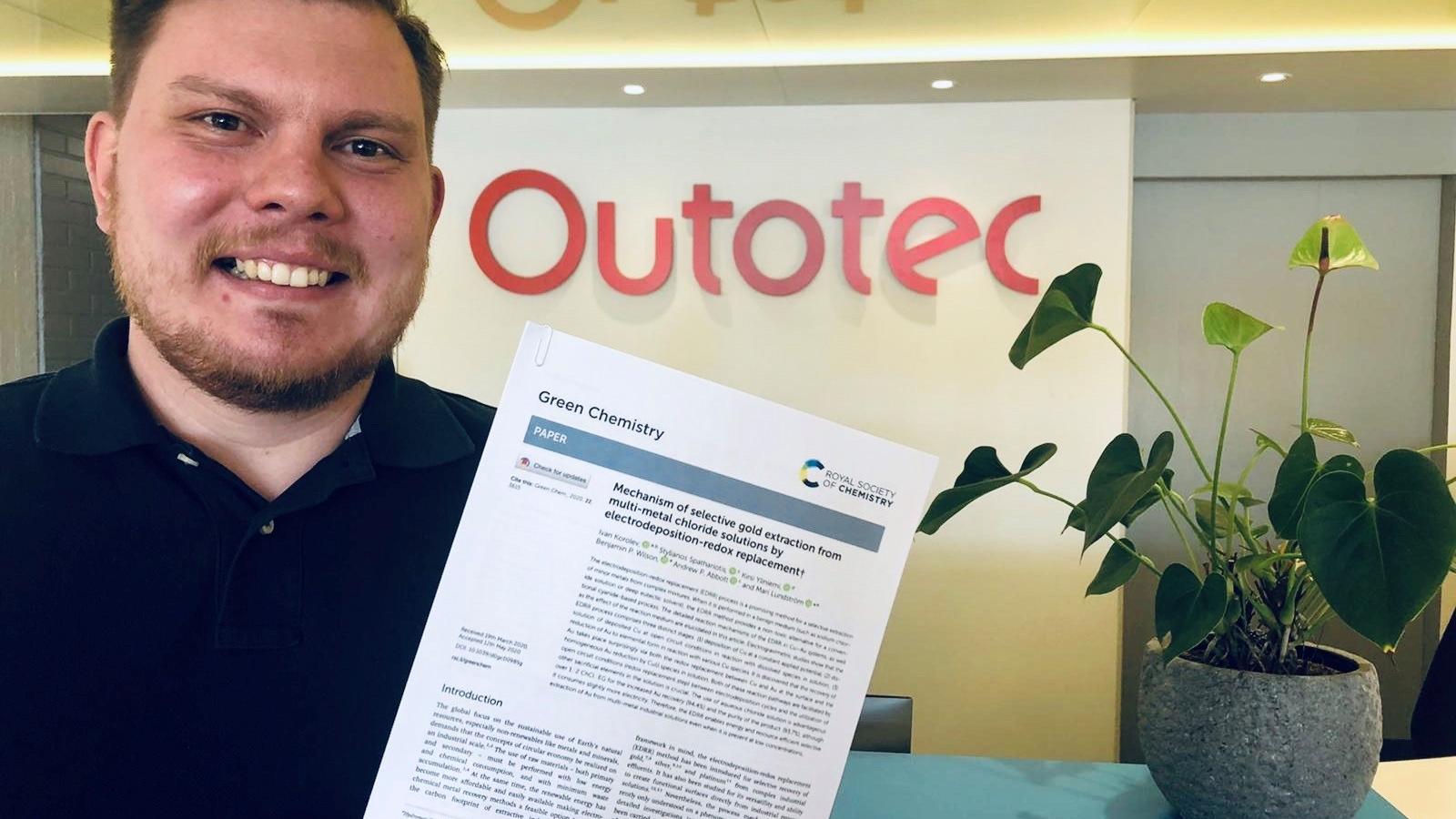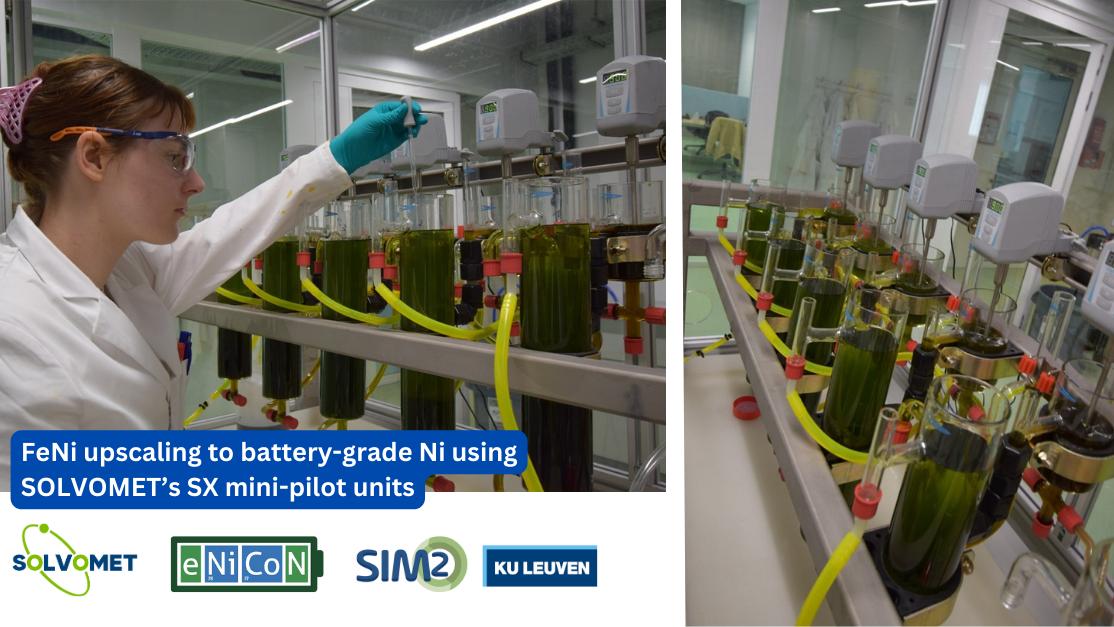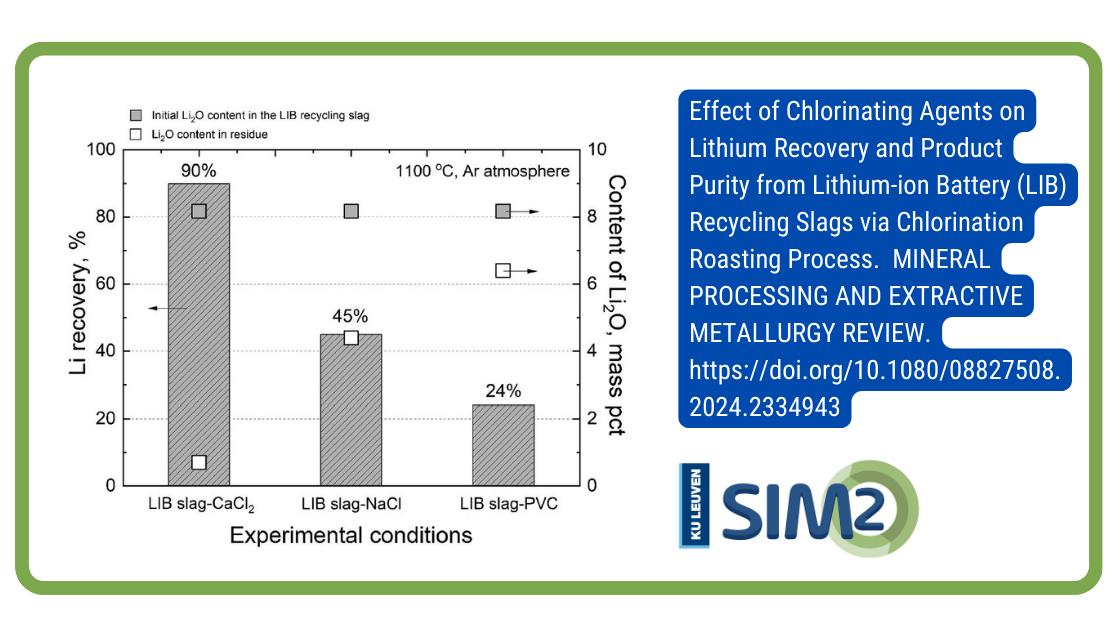Collaborative research of the EU MSCA-ETN SOCRATES project members from Outotec Oy, Aalto University and University of Leicester was selected by the Editors of the Green Chemistry journal as one of the hottest article published in 2020. This commendation shows the significance of the topic for a scientific community and highlights the quality of the research. The work published in the Journal for Green Chemistry is Open Access.
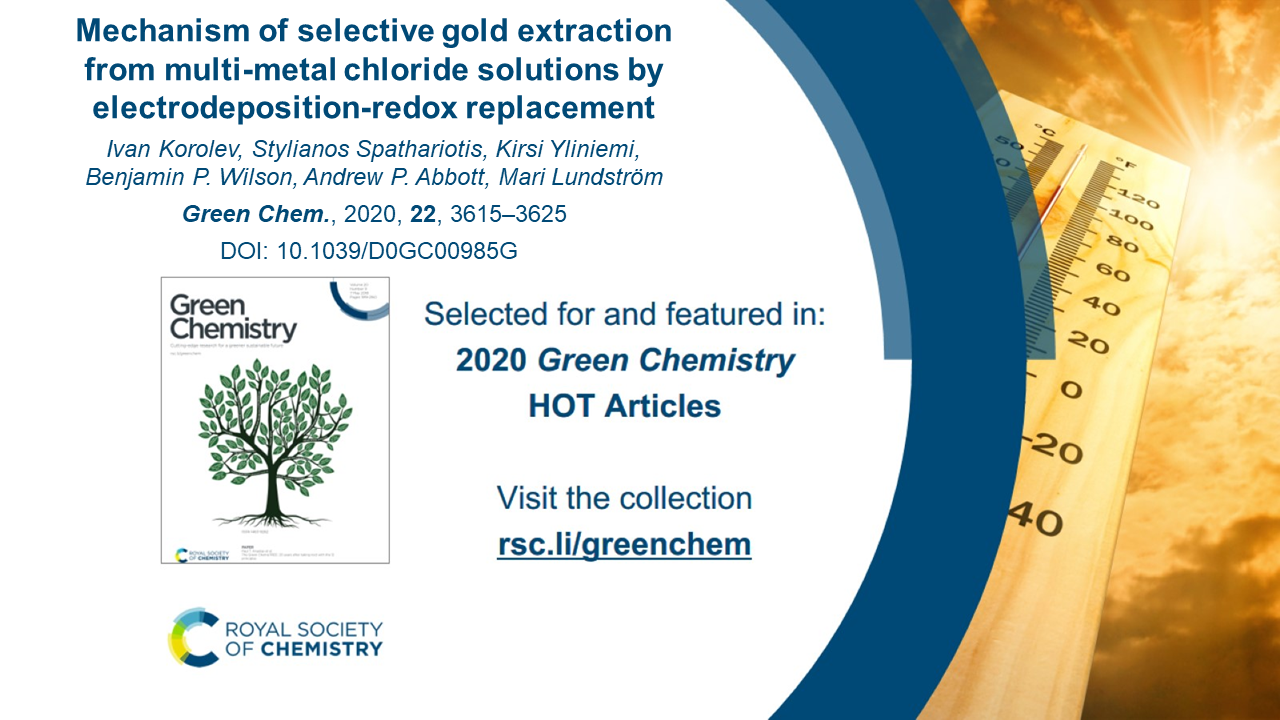
Cyanide leaching
For decades cyanide leaching has been the most common process for extraction of gold from primary and secondary resources. At the same time, cyanidation has been blamed throughout the years for its hazardous impact on human health and environment.
These concerns have boosted the research of benign, non-toxic replacements for cyanide, such as chlorides and deep eutectic solvents. At the same time, the renewable energy has become more affordable and easily available making electrochemical metal recovery methods a feasible option to reduce the carbon footprint of extractive industry.
EDDR method
In their paper, authors Ivan Korolev, Stylianos Spathariotis, Kirsi Yliniemi, Benjamin P. Wilson, Andrew P. Abbott and Mari Lundström investigate in depth the reaction mechanism of previously introduced Electrochemical Deposition-Redox Replacement (EDRR) method for selective gold extraction from hydrometallurgical solutions.
Using a wide range of electrochemical methods, including cyclic voltammetry, electrochemical quartz crystal microbalance, and rotating ring-disk amperometry, the reactions that occur at each step of the process were studied to gain a better understanding of the EDRR. It was discovered that presence of copper in the solution is highly beneficial for the overall efficiency of the gold recovery.
By carrying out the gold extraction experiments in aqueous chloride solution and in 1:2 choline chloride-ethylene glycol deep eutectic solvent (Ethaline), it was found that the efficiency and purity of the recovered gold in aqueous chloride solution is superior than in deep eutectic solvent at the same energy consumption.
Nevertheless, thanks to a large variety and tunability of deep eutectic solvents, there is a possibility to find a system in which the EDRR process would overperform the aqueous solutions. However, this task is outside of the scope of the published article and could be addressed in the follow-up research.
Environmental benefits
All in all, the obtained results prove that the EDRR method can be productively used for the recovery of trace amounts of gold from hydrometallurgical solutions used for cyanide-free gold leaching in environmentally friendly and resource-efficient manner.
This electrochemical method does not require addition of any chemicals to achieve remarkably selective gold extraction, thus utilizing EDRR could reduce the need for resources and the costs related to entire gold recovery process.
Full paper reference
Ivan Korolev, Stylianos Spathariotis, Kirsi Yliniemi, Benjamin P. Wilson, Andrew P. Abbott, Mari Lundström (2020). Mechanism of selective gold extraction from multi-metal chloride solutions by electrodeposition-redox replacement. Green Chemistry 22 (11), 3615–3625. DOI:10.1039/D0GC00985G
.png)
Acknowledgements
 The research leading to these results is part of the MSCA ETN SOCRATES project which received funding from the EU Framework Programme for Research and Innovation Horizon 2020 under Grant Agreement No 721385 (EU MSCA-ETN SOCRATES). Projects GoldTail (Grant 319691) and NoWASTE (Grant 297962) funded by the Academy of Finland are greatly acknowledged.
The research leading to these results is part of the MSCA ETN SOCRATES project which received funding from the EU Framework Programme for Research and Innovation Horizon 2020 under Grant Agreement No 721385 (EU MSCA-ETN SOCRATES). Projects GoldTail (Grant 319691) and NoWASTE (Grant 297962) funded by the Academy of Finland are greatly acknowledged.
